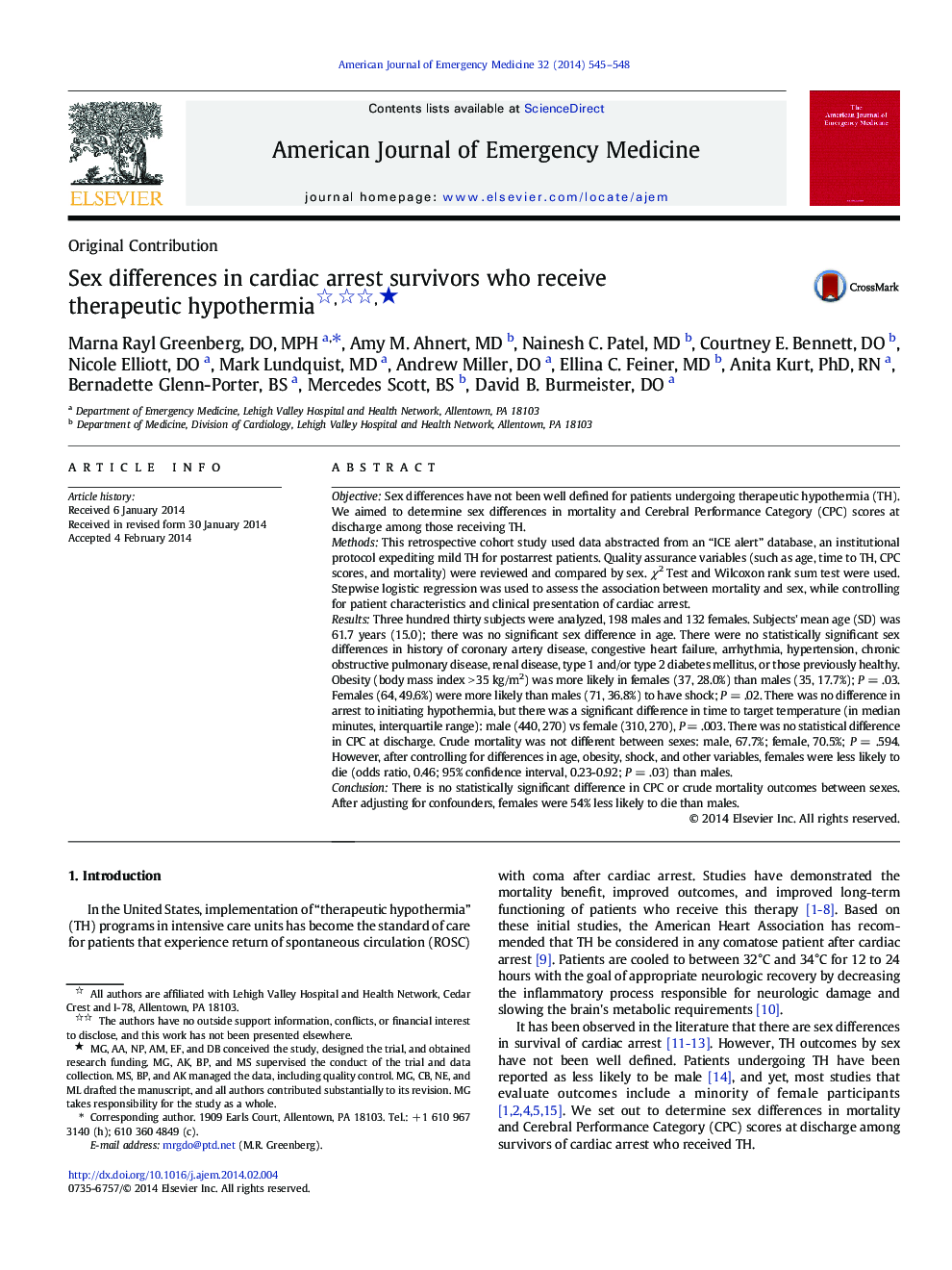| کد مقاله | کد نشریه | سال انتشار | مقاله انگلیسی | نسخه تمام متن |
|---|---|---|---|---|
| 3225044 | 1588117 | 2014 | 4 صفحه PDF | دانلود رایگان |
ObjectiveSex differences have not been well defined for patients undergoing therapeutic hypothermia (TH). We aimed to determine sex differences in mortality and Cerebral Performance Category (CPC) scores at discharge among those receiving TH.MethodsThis retrospective cohort study used data abstracted from an “ICE alert” database, an institutional protocol expediting mild TH for postarrest patients. Quality assurance variables (such as age, time to TH, CPC scores, and mortality) were reviewed and compared by sex. χ2 Test and Wilcoxon rank sum test were used. Stepwise logistic regression was used to assess the association between mortality and sex, while controlling for patient characteristics and clinical presentation of cardiac arrest.ResultsThree hundred thirty subjects were analyzed, 198 males and 132 females. Subjects' mean age (SD) was 61.7 years (15.0); there was no significant sex difference in age. There were no statistically significant sex differences in history of coronary artery disease, congestive heart failure, arrhythmia, hypertension, chronic obstructive pulmonary disease, renal disease, type 1 and/or type 2 diabetes mellitus, or those previously healthy. Obesity (body mass index > 35 kg/m2) was more likely in females (37, 28.0%) than males (35, 17.7%); P = .03. Females (64, 49.6%) were more likely than males (71, 36.8%) to have shock; P = .02. There was no difference in arrest to initiating hypothermia, but there was a significant difference in time to target temperature (in median minutes, interquartile range): male (440, 270) vs female (310, 270), P = .003. There was no statistical difference in CPC at discharge. Crude mortality was not different between sexes: male, 67.7%; female, 70.5%; P = .594. However, after controlling for differences in age, obesity, shock, and other variables, females were less likely to die (odds ratio, 0.46; 95% confidence interval, 0.23-0.92; P = .03) than males.ConclusionThere is no statistically significant difference in CPC or crude mortality outcomes between sexes. After adjusting for confounders, females were 54% less likely to die than males.
Journal: The American Journal of Emergency Medicine - Volume 32, Issue 6, June 2014, Pages 545–548
